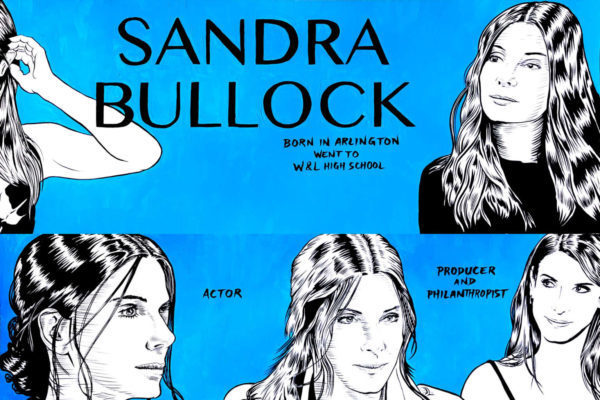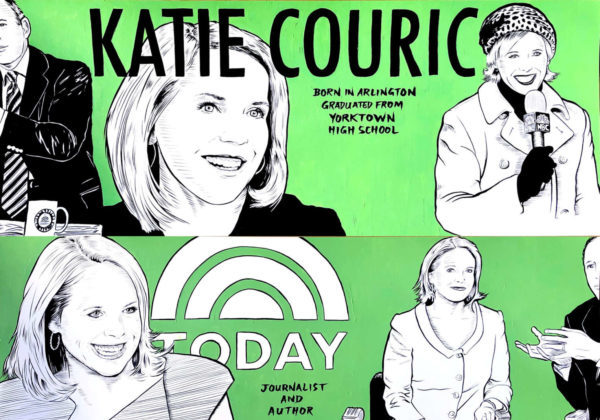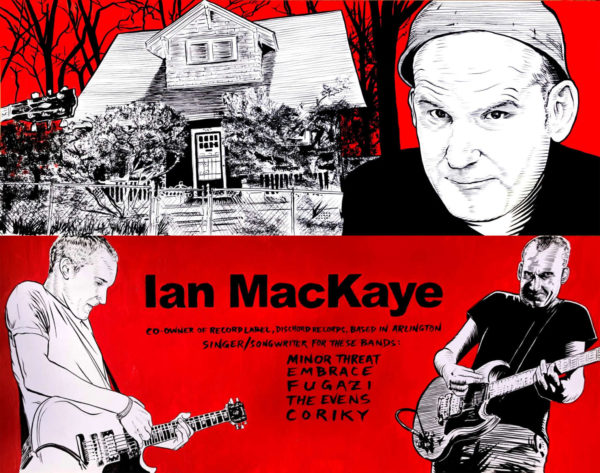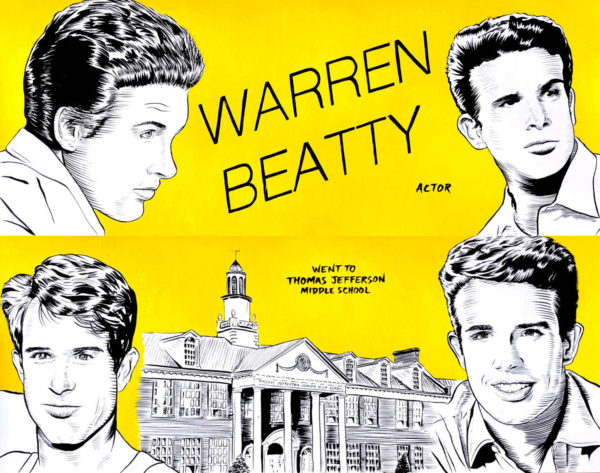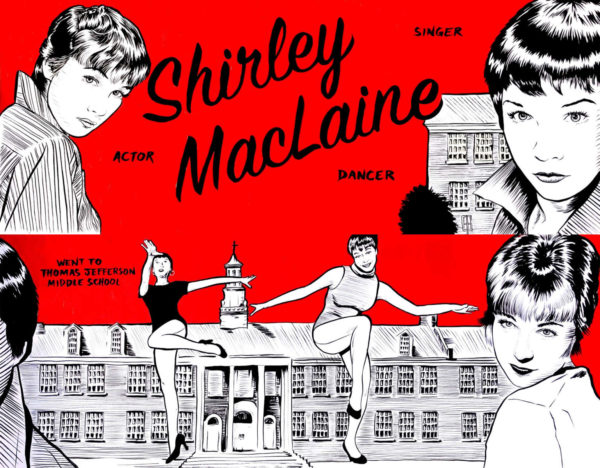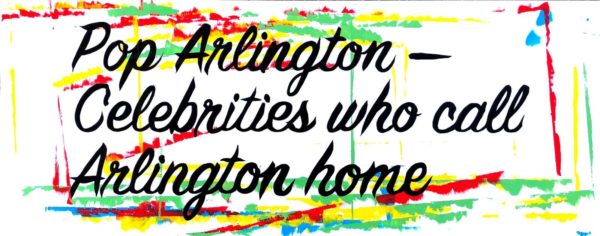The latest “Art on the ART bus” installations features public icons with ties to Arlington.
A partnership between Arlington Arts and Arlington Transit, the program enlivens commutes with artwork highlighting three different Arlington-based artists at a time. This December, Art on the ART Bus celebrates its 10-year anniversary.
“It’s my job to make sure there’s art on a bus called ART,” Arlington Arts Curator Cynthia Connolly said. “It’s so fun.”
The newest installation, which went up earlier this month, includes depictions of famous Arlingtonians, including:
- Actress and dancer Shirley MacLaine
- Singer-songwriter Roberta Flack
- Actress Sandra Bullock
- Actor Warren Beatty
- Journalist Katie Couric
- Singer-songwriter and local punk rock icon Ian MacKaye
All six were born or raised here, put down roots in the area, or otherwise became famous while living in Arlington.
MacLaine and her younger brother Beatty grew up in the Dominion Hills neighborhood of Arlington. During her upbringing in Arlington, Flack accompanied her church’s choir on the piano. Bullock, who graduated from what is now Washington-Liberty High School, and Couric, who attended Yorktown High School, were cheerleaders. Beatty played football for W-L.
Connolly and her team drafted a list of famous Arlingtonians and picked those who enjoy the most name recognition.
“There is so much hidden history in Arlington,” she said. “I hope people research this more.”
So does the artist behind the installation, dubbed “Pop Arlington:” Ryan Carroll Nelson, who has a studio in Arlington.
Commuters may notice a punk edge to the art. Both Connolly and Nelson were active in D.C.’s punk scene in the 1980s and 1990s, and their connection to Ian MacKaye is personal.
The heart of the scene was MacKaye’s internationally-known indie record label, headquartered in an Arlington bungalow dubbed the Dischord House.
“People are fanatic about the record label, but everyone thinks it’s in D.C.,” Connolly said. “It’s my duty to remind people it’s in Arlington.”
Punk rockers moved to Arlington for the detached houses they could practice in without disturbing the neighbors, Connolly said. Rent was cheaper and they did not have to worry about their instruments being stolen.
She worked at the Dischord House, which became the subject of her book about the scene. During those years that she got to know Nelson, who earned a reputation for his illustrations by drawing concert flyers, T-shirts and album covers for Dischord.
He also illustrated for Teen Beat Records, also based in Arlington, and founded by schoolmates at Wakefield High School.
“His comic-style approach and hand-drawn text is immediately recognizable, and his flyers are coveted collectables among music aficionados,” notes a press release about the project.
“I’ve known Ryan for a long time,” Connolly said. “It seemed the right fit.”
For this series, Nelson underpainted the panels in black and layered white and color on top — a style reminiscent of the underground comic scene of the 80s and 90s, which often featured comics printed in two rather than four colors.
Connolly also called on the DIY attitude of indie punk rockers and comic creators for the ART bus project, which had a tight budget and had to make due with a number of limitations.
“How do you make it happen? You do original artwork and throw it to the wind,” she said. “That’s all based on my experience in punk rock.”



